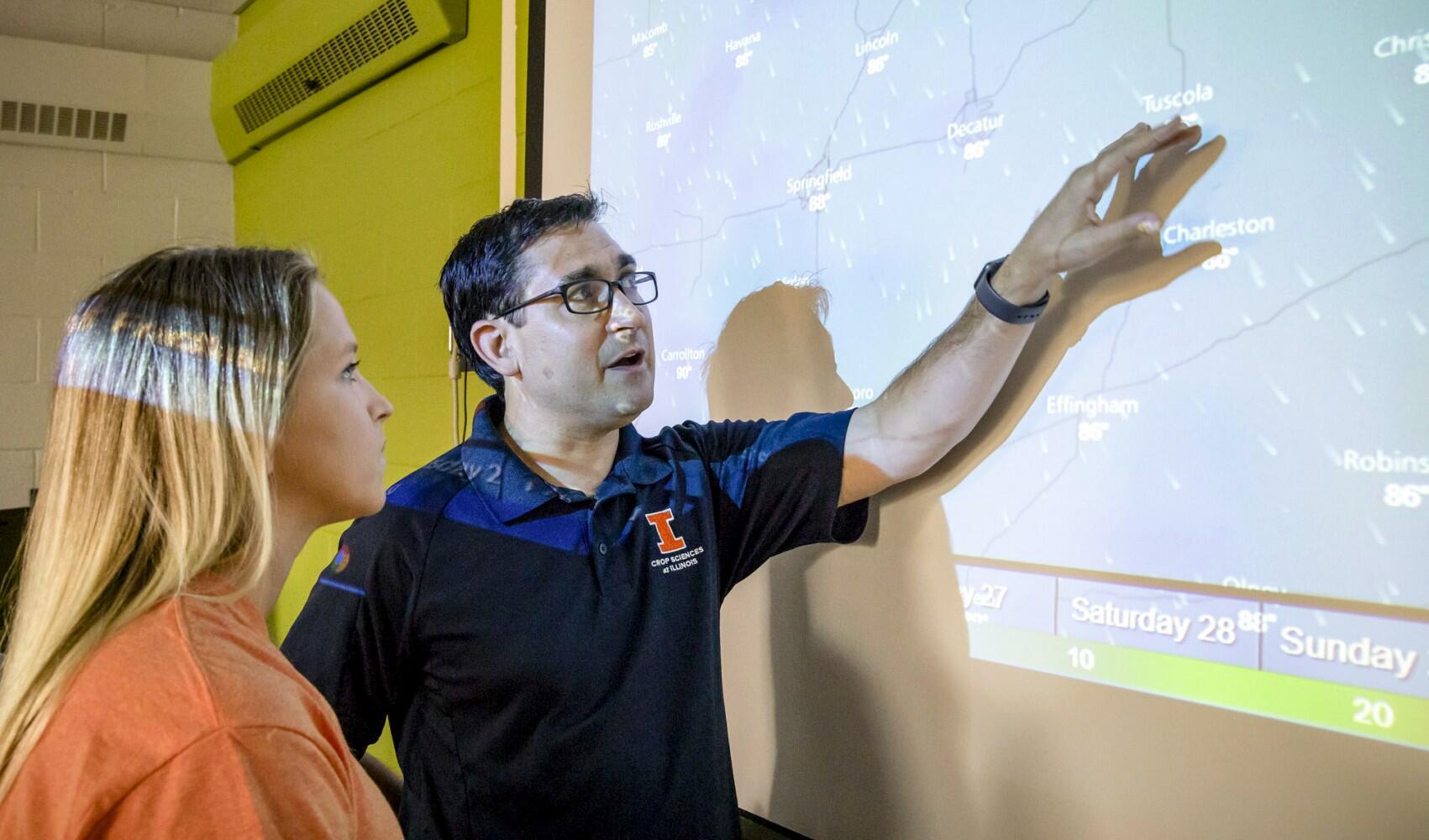Nitrogen calculators not created equal, according to Illinois study

URBANA, Ill. – When deciding how much nitrogen fertilizer to apply, farmers have options. The standard tool for the Midwest – the maximum return to nitrogen (MRTN) calculator – offers a static recommendation. It is based on hundreds of field trials, but doesn't vary much year to year. Newer dynamic tools have the potential to account for soil properties and weather, but also require input from farmers during the growing season to deliver site-specific nitrogen recommendations.
The idea is, always, to optimize corn yield for maximum profit. Avoiding over-application is part of that calculation, but it's also key to minimizing nitrogen pollution. So, which tool is better?
"The difference between tools is small and difficult to see in only a few trials. In consequence, we needed a dataset that allowed us to compare performance in the long term. That is where crop modeling came into play, allowing us to explore millions of soil and weather combinations," says German Mandrini, Ph.D. graduate from the Department of Crop Sciences at U of I, and first author of the new study in Agricultural Systems.
Mandrini used a crop model based on thousands of fields across Illinois to test static and dynamic nitrogen recommendation tools.
"This is an interdisciplinary study, only attainable thanks to the contributions of experts in crop modeling, environmental sciences, agricultural economics, and crop sciences from several institutions," says Mandrini. "The broad dataset not only allowed us to compare the performance of the tools but also to understand in what conditions the differences happened."
For the management scenarios explored, the researchers found that complex dynamic tools did not consistently increase profits over simpler static tools.
"Around half the time, dynamic tools under-predicted the amount of nitrogen a farmer needs, leading to yield penalties. Those yield penalties were usually high and not compensated by the situations in which the dynamic tool predicts nitrogen with higher accuracy,” says Nicolas Martin, corresponding author of the study and assistant professor in the Department of Crop Sciences. “For years, we haven't seen a clear winner among nitrogen-prediction tools, and our results explain why."
Martin specializes in big-data approaches to agricultural challenges, so the result came as a bit of a surprise. He explains that the results are important for setting clear goals in future research, acknowledging that higher complexity does not always mean better results.
"Dynamic tools require bookkeeping and data input from busy farmers, partially explaining the low adoption of current products in the marketplace. From the farmer's point of view, I imagine that newer tools based on precise information represent extra work. And then it's not always clear how much benefit they get one season to the other," Martin says. "I could see if they ended up with a high yield penalty in one season, farmers might not want to try it again."
The researchers also found some good news from an environmental standpoint: Both tools have the potential to reduce nitrogen leaching by about 15% compared with current practices.
"The higher accuracy of dynamic tools leads to reduced leaching, but static tools could achieve the same result by recommending the low end of the MRTN range,” Mandrini says. “This reduction can be attained in a simple way and at almost no cost for the farmers, just by lowering current recommendations.”
Do these results mean complex dynamic nitrogen tools are doomed to obscurity? The researchers don't think so. Instead, they say, the findings are an opportunity to refine these tools and redefine their goals. Since higher accuracy does not consistently improve profits and reduce nitrogen leaching, developers of nitrogen recommendation tools should be clear about whether they're prioritizing economic or environmental outcomes.
“Our results highlight the need to develop additional strategies, including education and policy, to account for environmental benefits and provide clear incentives for farmers to adopt these tools and increase the eco-efficiency of agriculture,” Martin says.
The article, "Understanding differences between static and dynamic nitrogen tools using simulation modeling," is published in Agricultural Systems [DOI: 10.1016/j.agsy.2021.103275]. Authors include German Mandrini, Cameron Pittelkow, Sotirios Archontoulis, Taro Mieno, and Nicolas Martin. This study was conducted thanks to the support of NIFA\Multistate Hatch Grant: Enhancing nitrogen utilization in corn-based cropping systems to increase yield, improve profitability and minimize environmental impacts [ILLU-802-965].
The Department of Crop Sciences is in the College of Agricultural, Consumer and Environmental Sciences at the University of Illinois at Urbana Champaign.